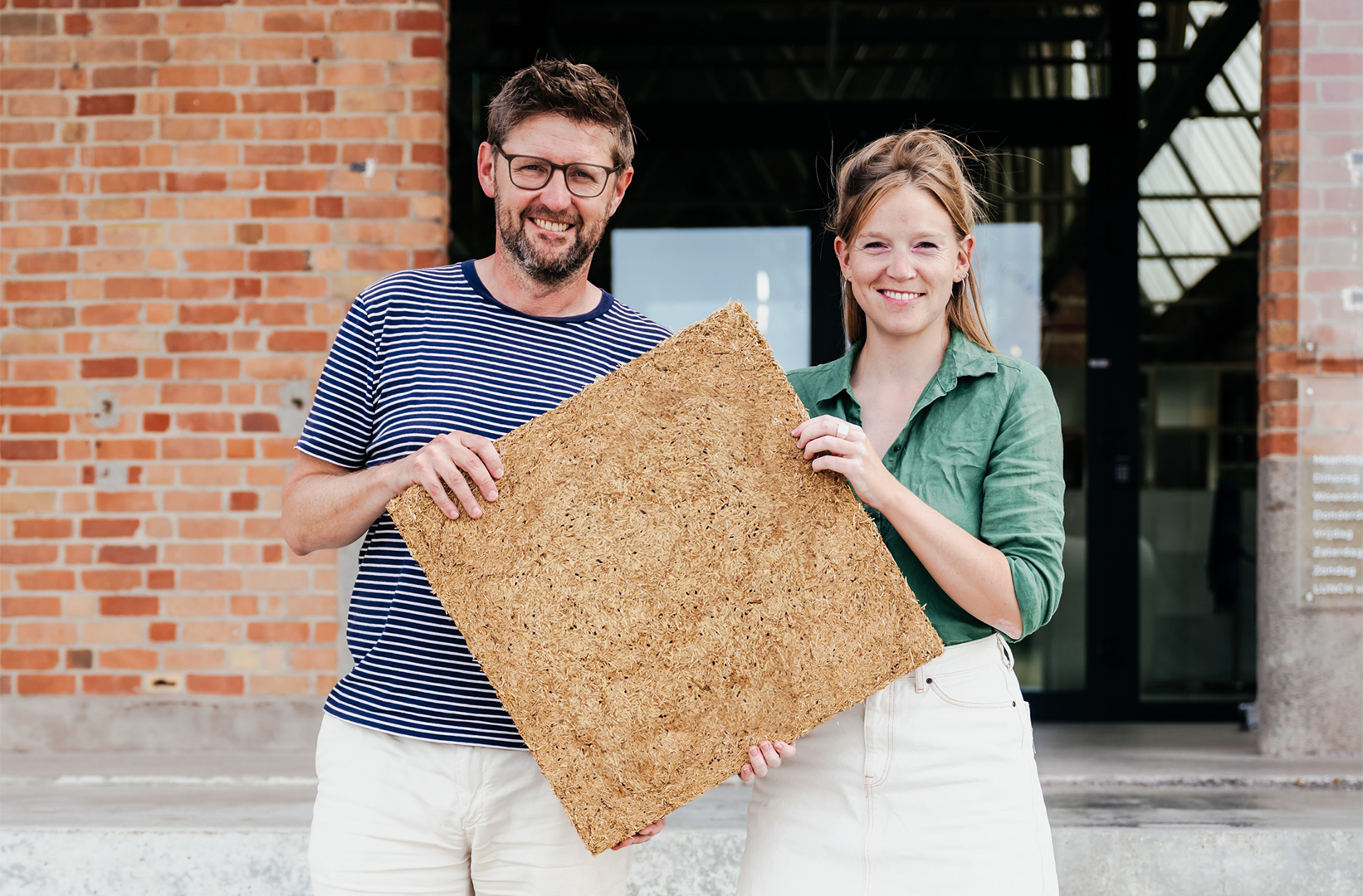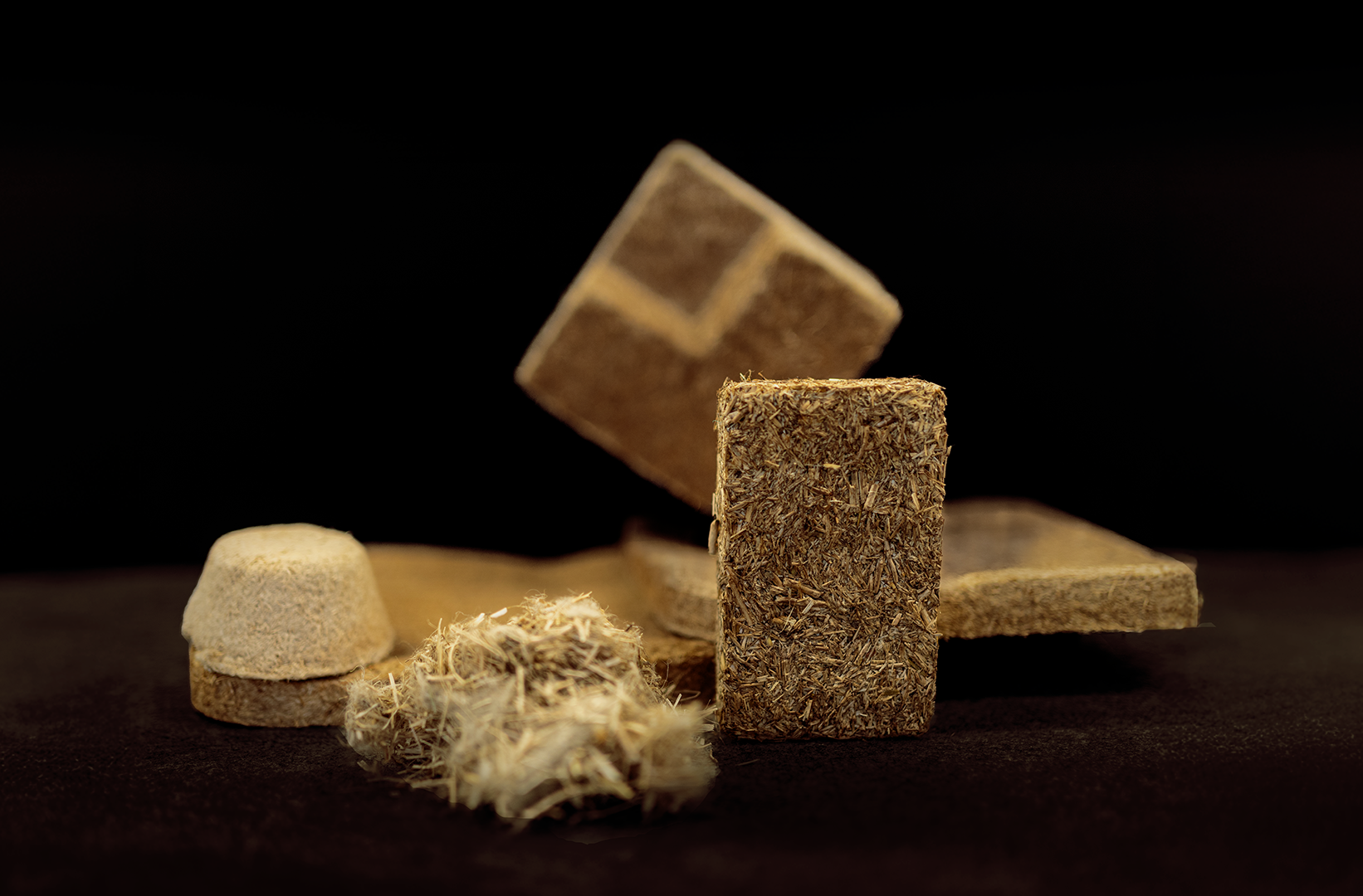In this series, we spotlight the creative minds shaping BBoBB. Who are they, what drives them, and how are they advancing biodesign with bio-based materials?
This edition features Dries Laperre and Laura Willems, co-founders of Vlastic, based in Kortrijk, Belgium.
Who are you?
Hi, we're Dries Laperre and Laura Willems, co-founders of Vlastic, based in Kortrijk, Belgium - right in the heart of Flanders' traditional flax region. As passionate product designers, we focus on circular design and have been specializing since 2024 in transforming agricultural flax waste streams into functional biomaterials.

We're currently developing Vlastic, a new biomaterial that requires no binding agent and can be pressed into various applications from acoustic panels to protective packaging.
What is your role in the BBoBB project?
In the BBoBB project, we're working with flax shives - the woody material that remains after extracting valuable fibers from flax plants. While these abundant agricultural byproducts are typically used as bedding for stables, a significant portion is still being burned for low-value energy. We have 72,000 tons of this underutilized resource generated annually just in Flanders alone!
We want to go beyond creating design objects - we're developing sustainable and biobased materials that are simultaneously viable, feasible, and desirable, proving that circular innovation can succeed commercially while creating genuine environmental and social impact.
What have you done so far in the project?
So far, we've been experimenting with different pressing techniques and material compositions. We've completed many experiments - some successful, others less so, but all incredibly educational.

Parallel, we have conducted a market research and user interviews and discovered a crucial missing link for interior applications: interior design (objects) is heavily taste-based - specific colors, finishes, and aesthetic properties are often non-negotiable for consumers and designers. Whereas our flax experiments are mostly brown. This led us to our next phase of experimentation, focusing on the key question: "How can we transform our raw materials - which are naturally brown from the flax shives - into color-variable materials?"
Working with Bert’s biodesign methodology?
The card method has been incredibly valuable for us. When you're deep into material development and focused on technical performance, you can easily lose sight of the bigger picture. Bert's methodology opened up our perspective and helped us step back to see our material through fresh eyes.
It pushed us to think beyond our usual engineering and design constraints, and helped us rediscover the wonder of what we're actually working with - this amazing flax material that has so much untapped potential we hadn't fully considered before.
Your vision on working with biobased materials
For us, biobased design is about purity. We believe in taking materials to their purest form - where circularity is maximized and complexity is minimized. Our philosophy is that the most impactful solutions are often found in simplicity.
Any final thoughts or hopes for the BBoBB project?
We hope that the BBoBB project will show the world what’s possible when designers, farmers, researchers and production facilities work together. It’s not just about making products—it’s about buildingbetter systems.
As you point out, impactful solutions are often found in simplicity and through our joint efforts in BBoBB, we can build better systems.
